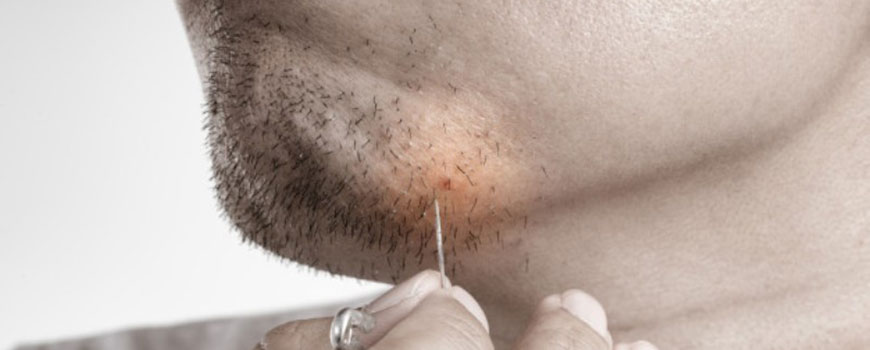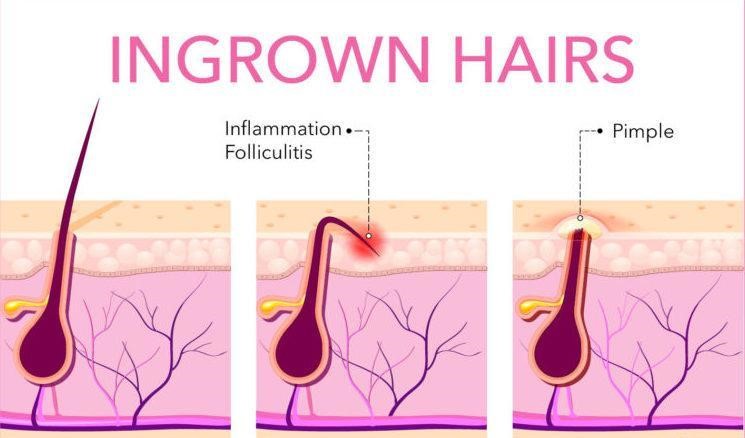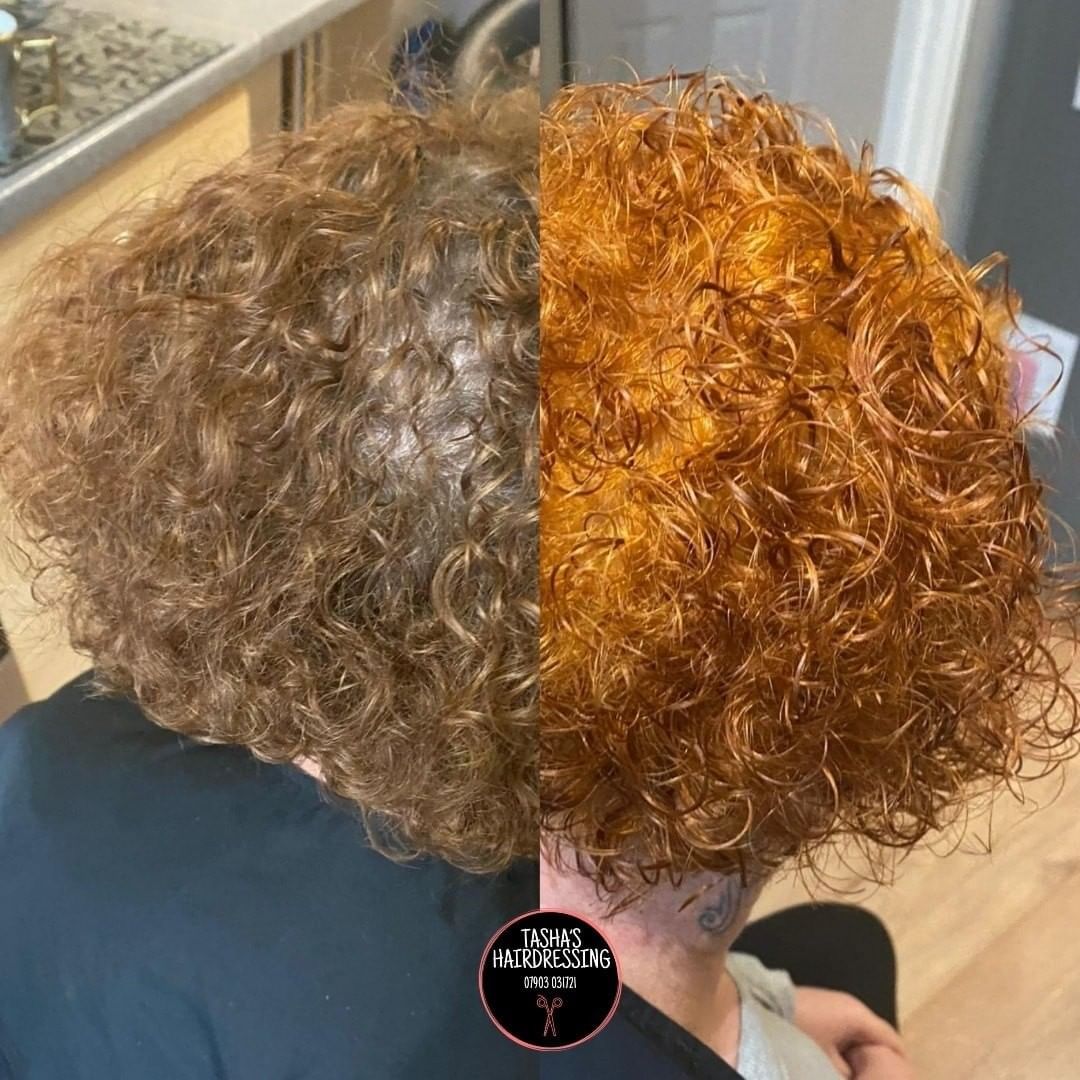Table Of Content

Bacteria can then take over and cause an infection known as folliculitis, which leads to the development of a cyst. Certain diseases or trauma to your skin can also cause them. Every pore on your skin contains a hair follicle, some fine and some coarse. Pores are the small holes in our skin that allow sweat and oil to reach the surface of the glands underneath.
Infected ingrown hair treatment
If you allow your hair to grow out fully, there won’t be an opportunity for the hair to become ingrown. People who are in the military or a police force also frequently develop ingrown hairs since they are often required to shave their facial hair frequently. Folliculitis is often caused when hair follicles are infected with bacteria, commonly Staphylococcus aureus (staph). It may also be caused by viruses, fungi, parasites, medications or physical injury. Whether you shave, wax, or tweeze, removing hair isn’t always trouble-free. The process can cause swelling, irritating your skin, and leading to razor bumps and cysts.
What to expect from your doctor
Usually, cysts do not hurt unless an infection develops. An infected cyst may make the skin red or discolored, itchy, and tender. Don’t try to lift the hair out with tweezers like you might with typical ingrown hair. At this point, your hair is embedded far too deep underneath the bump or cyst for you to pull it out. When it comes to razor bumps, the cause is usually improper hair removal techniques. The hair grows from the bottom of your pore and is kept bathed in sebum secreted by the pore.
How to deal with ingrown hairs, from understanding causes to seeking medical help - The National
How to deal with ingrown hairs, from understanding causes to seeking medical help.
Posted: Sat, 23 Mar 2024 07:00:00 GMT [source]
Causes of ingrown hair cysts
Regular ingrown hairs or mildly infected ingrown hairs can be left alone until the condition resolves. It also helps if you don't shave the area or try alternative hair removal methods and techniques. However, your doctor may prescribe antibiotic medication or creams if you develop more severe ingrown hair issues such as cysts or folliculitis. An ingrown hair occurs when a hair that you've shaved, waxed, or plucked grows back into your skin. This can cause red, swollen, and infected hair follicles.
If you have a more serious infection that doesn't clear up quickly or worsens, you should contact your doctor. The condition is also called pseudofolliculitis barbae. It develops when shaved hairs curve back into the skin, leading to inflammation. Infected ingrown hairs can vary in severity and appearance. They can lead to increased inflammation, pain, and the formation of pustules or cysts. If an infection develops and worsens, you may need medical treatment.
What is an ingrown hair cyst?

This may be due to preference, cultural values, or work requirements. Whatever the reason may be for wanting or needing to shave, there are other ways to prevent ingrown hairs. If they’re not infected, some ingrown hair cysts can go away on their own. In some cases, there’s another underlying cause, such as a genetic mutation, which means they can develop again. The only way you can prevent ingrown hairs from occurring at all is to refrain from hair removal altogether. Mild infections are less noticeable and usually clear up without treatment.
Charitable Care & Financial Assistance
Retinoid creams are effective in removing dead skin cells that may contribute to ingrown hairs. They can also help reduce scars from former infections. Many types of bacteria can cause infections in an ingrown follicle. While not all ingrown hairs will contract an infection with staph, some can develop this type of infection from a bacterium that usually lives on the skin.

Treatment for ingrown hair cysts varies depending on the type of cyst involved. Some cysts may need to be treated with antibiotic ointment or surgery, while others may not need any treatment at all. If ingrown hairs won’t take a hike, you may need to forgo shaving, waxing or tweezing that area. Consider alternative hair removal options, like laser hair removal. This method targets the hair follicle, and it’s usually permanent. And because the hair doesn’t grow back after treatment, you won’t have to worry about ingrown hairs.
Most mildly infected ingrown hairs heal on their own but it’s important to ensure you don’t miss any signs of a severe infection. This can lead to inflammation, redness, irritation, and the formation of tiny, irritated, and painful bumps. Ingrown hairs commonly occur in areas where hair is frequently removed, such as the face, neck, armpits, legs, and groin area. Infections can develop around the ingrown hair, causing pus formation, discoloration and pain, though.
If you see signs of infection, you should visit your healthcare provider. It is also possible to develop a bacterial infection, especially if you are scratching at the ingrown hair. If you notice signs of infection—like pus, worsening pain, or lesions—see a healthcare provider so they can offer proper treatment.
How To Make Ingrown Hairs a Thing of the Past, According to a Dermatologist - GQ
How To Make Ingrown Hairs a Thing of the Past, According to a Dermatologist.
Posted: Mon, 29 Jan 2024 08:00:00 GMT [source]
It will not have a visible head and may be red, white, or yellow. Preventing ingrown hairs is the best way to keep cysts from developing around them. However, this type of cyst is usually harmless and will often go away without treatment.






